The Army Fitness Test (AFT) introduced as the standard beginning effective from 1st June, 2025, is one of the most detailed yet practical changes we’ve had in recent years. AFT is a test of your combat readiness, ability to work under pressure, and a crucial factor in your career progression as a soldier. Understanding the AFT score chart and how it connects to your daily training can make a real difference, especially when you’re aiming for advancement or trying to gauge your physical development. You can view or download the AFT scoring chart from here or check out all the details below.
The AFT (or Army Fitness Test) involves five physical events:
- Maximum Deadlift (MDL) – 3 repetitions
- Hand-Release Push-Up with Arm Extension (HRP)
- Sprint-Drag-Carry (SDC)
- Plank (PLK)
- Two-Mile Run (2MR)
Each event is scored out of 100 points, totaling a maximum score of 500. A minimum of 60 points is required to pass each assessment.
Score Requirements Based on Role
The AFT scoring system varies slightly depending on your MOS:
- Combat MOS Soldiers: Must score at least 60 points per event, with a minimum overall score of 350. This standard is sex-neutral, but it’s age-normed.
- Combat-Enabling and Support MOS Soldiers: Also require at least 60 points per event, but the overall passing score is 300. This standard is both age- and gender-normed.
Maximum Deadlift (MDL) – 3 Repetition Max
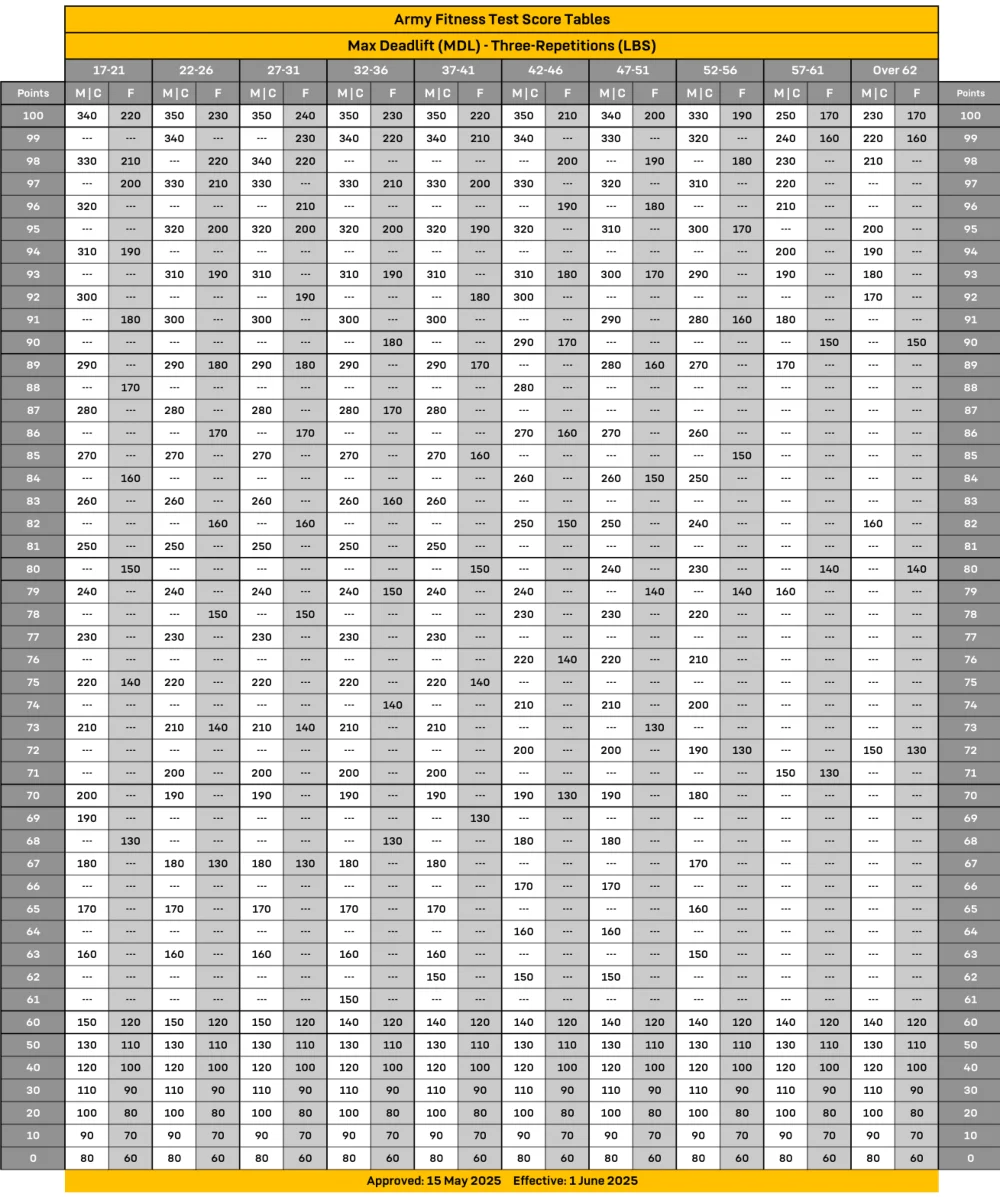
MDL measures lower body and core strength, you’ll use a hex bar and must perform three continuous repetitions at a chosen weight.
Key Points:
- Feet shoulder-width inside the bar.
- Lift with hips and knees moving together.
- Keep your back straight and arms fully extended.
- Must return the weight under control — dropping it ends the rep.
- Soldiers get two attempts: one initial and one extra if needed (at a lower or higher weight, depending on results).
It’s a foundational strength training that shows your ability to lift and carry heavy loads, which is something directly relevant in both combat and operational settings.
Hand-Release Push-Up with Arm Extension (HRP)
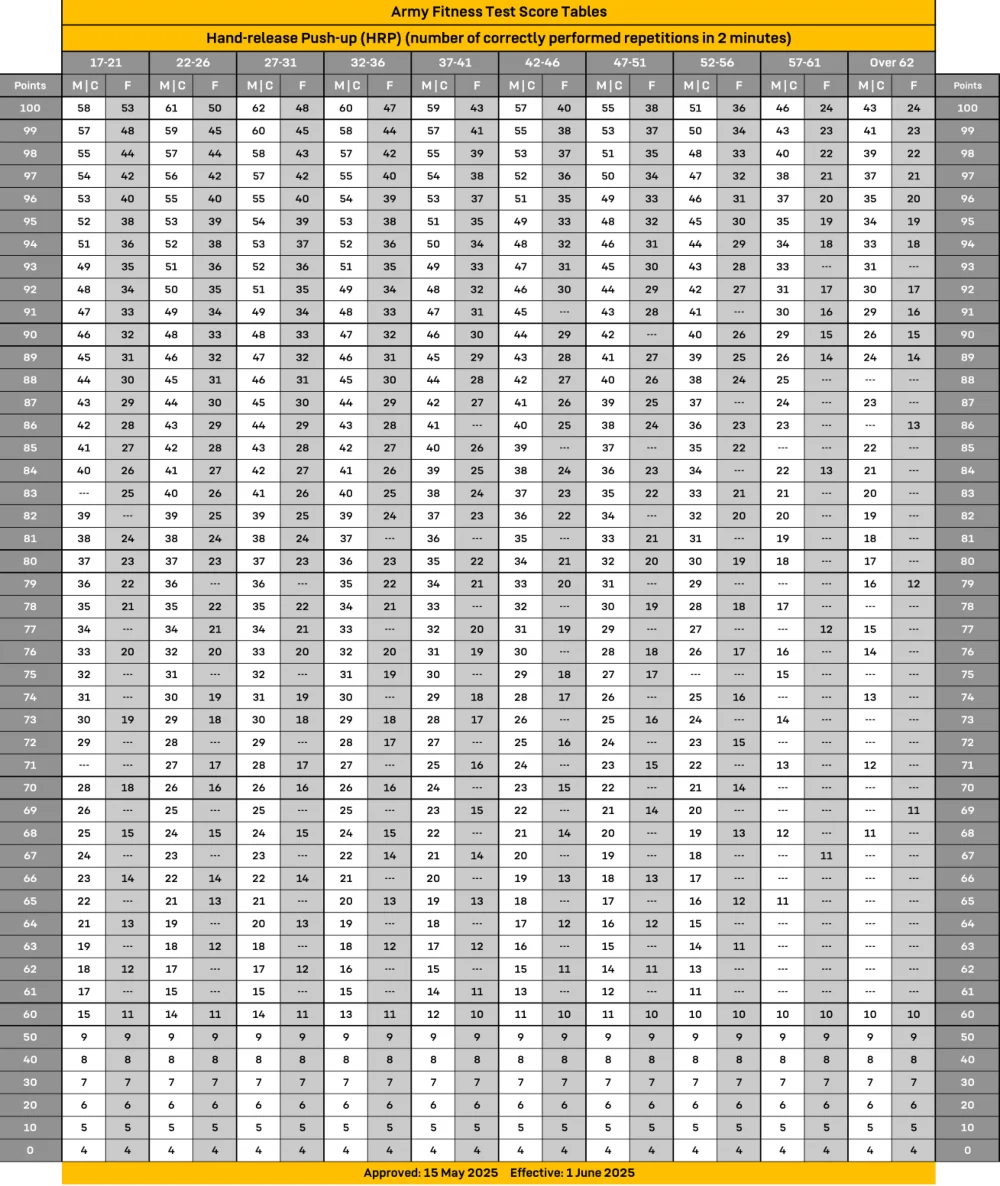
Hand-Release Push-Up reveals your upper body endurance and core control. It’s more involved than usual push-ups.
This is how it’s done:
- Begin in the prone position.
- Push your body up in one motion to a fully extended arm position.
- Lower yourself back to the ground.
- Extend arms out to a “T” on the ground (the hand release).
- Return hands beneath shoulders to begin the next repetition.
Execution Notes:
- Your body must move as one unit with no sagging hips or jerking.
- Only the front-leaning rest is allowed for pausing.
This event is an assessment of the soldier’s controlled, full-body strength and posture maintenance under repetitive motion, which has direct parallels to many tactical movements.
Sprint-Drag-Carry (SDC)
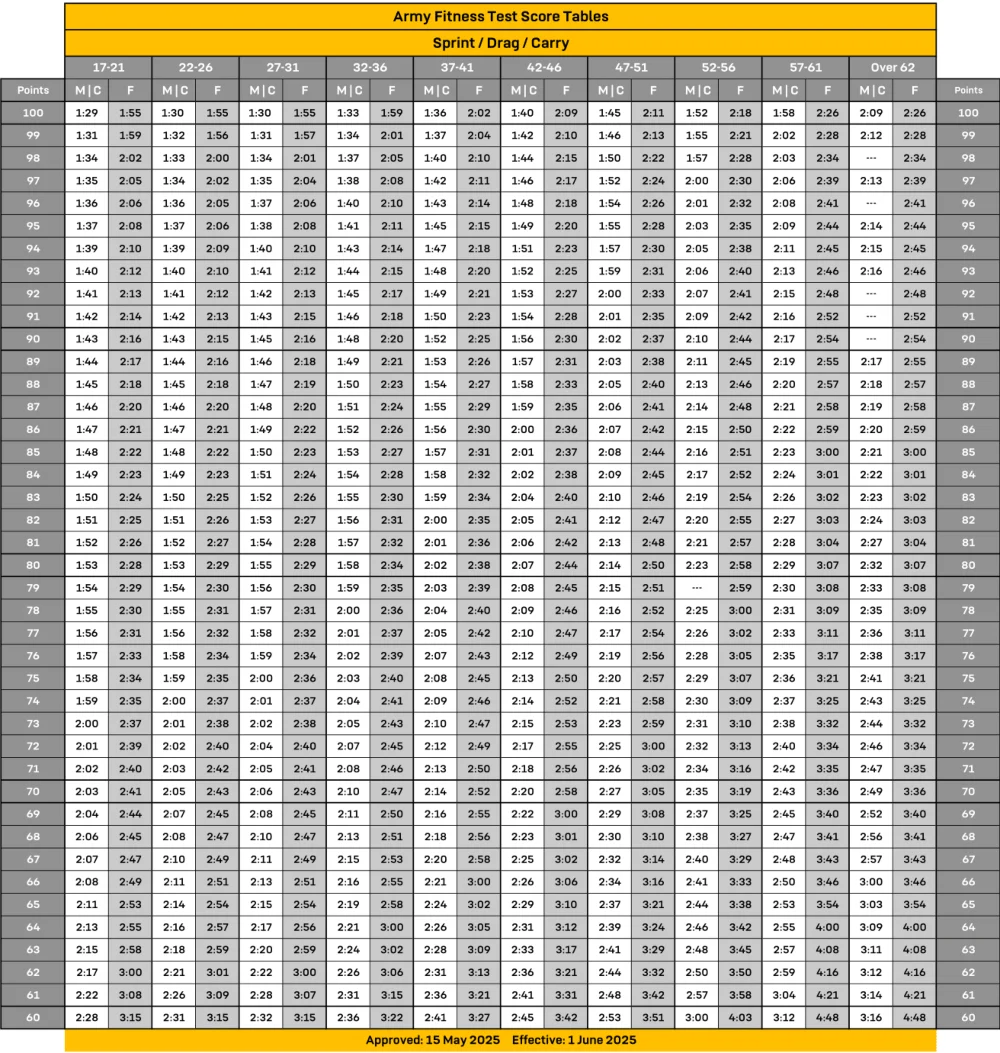
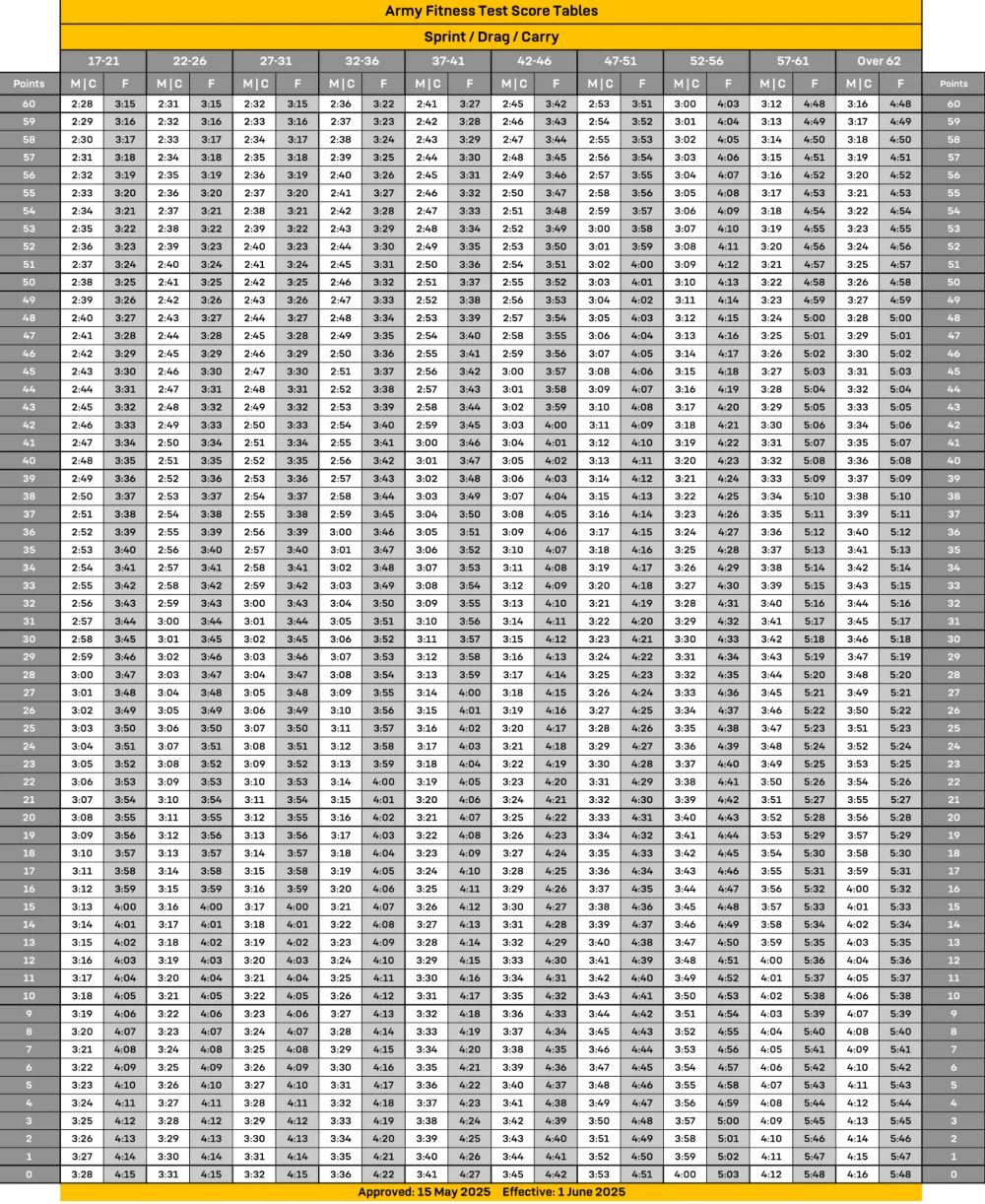
This five-phase event evaluates agility, speed, and muscular endurance. The sequence includes:
- Sprint 25m, touch the line, and sprint back.
- Drag a weighted sled (90 lbs) 25m and back.
- Lateral Shuffle 25m and back.
- Carry two 40-pound kettlebells 25m and back.
- Sprint again 25m and back.
What to expect:
- You must touch each turn line with hand and foot.
- Kettlebells can’t be dropped mid-way because if you do, you have to return to that spot to continue.
- Your final sprint stop time marks your event completion.
This test figures out battlefield movement and casualty evacuation — highly functional, highly relevant.
Plank (PLK)
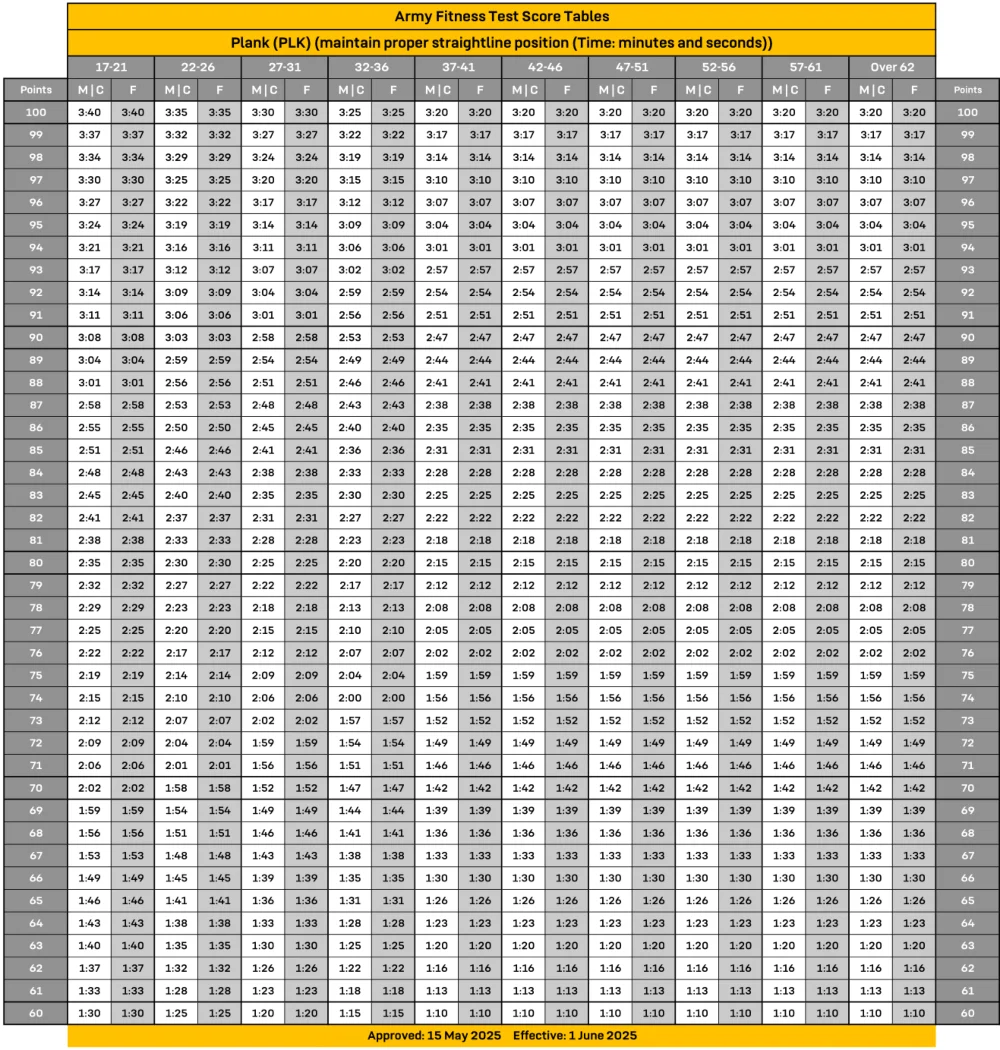
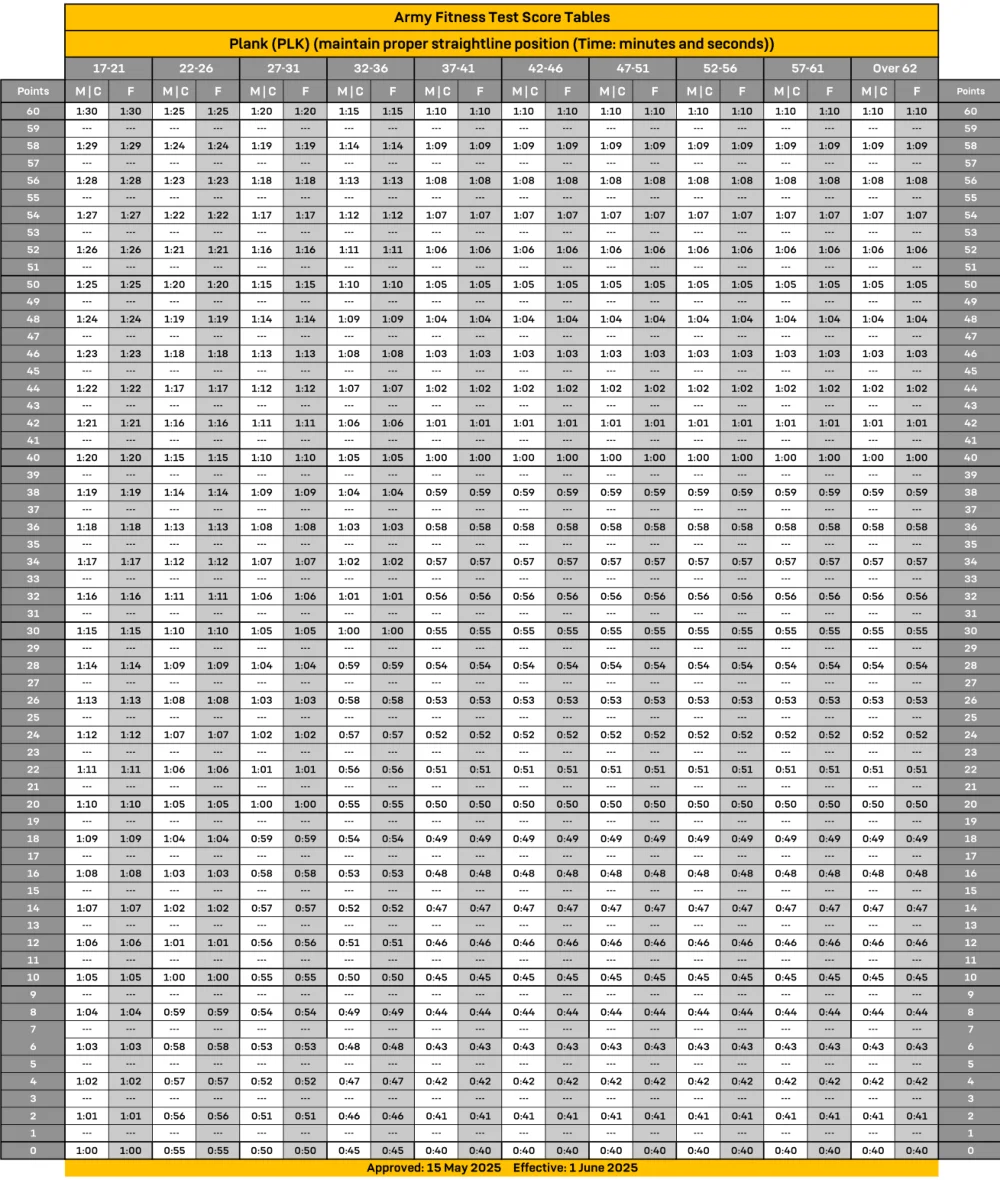
The plank replaced the leg tuck and now measures core endurance in a more inclusive and controlled way.
Here’s how to perform this event:
- Forearms and toes on the ground, elbows aligned under shoulders.
- Body must remain straight from head to ankles without dropping hips.
- Feet can be placed up to a boot’s width apart.
- You may tremble or shake, but loss of form ends the event.
- One correction is allowed, and after that, the event terminates if the form breaks again.
This is a test about holding stability under fatigue, crucial for ruck marches, weapon handling, and general tactical posture.
Two-Mile Run (2MR)
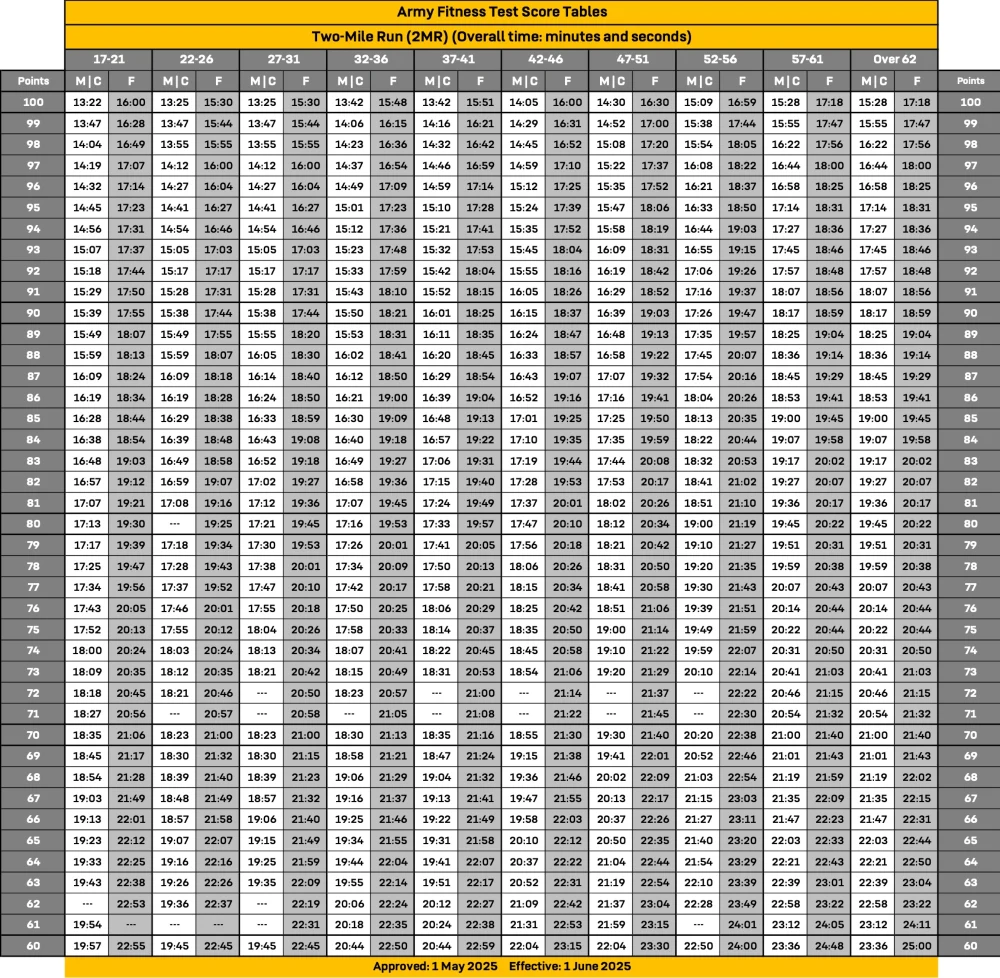
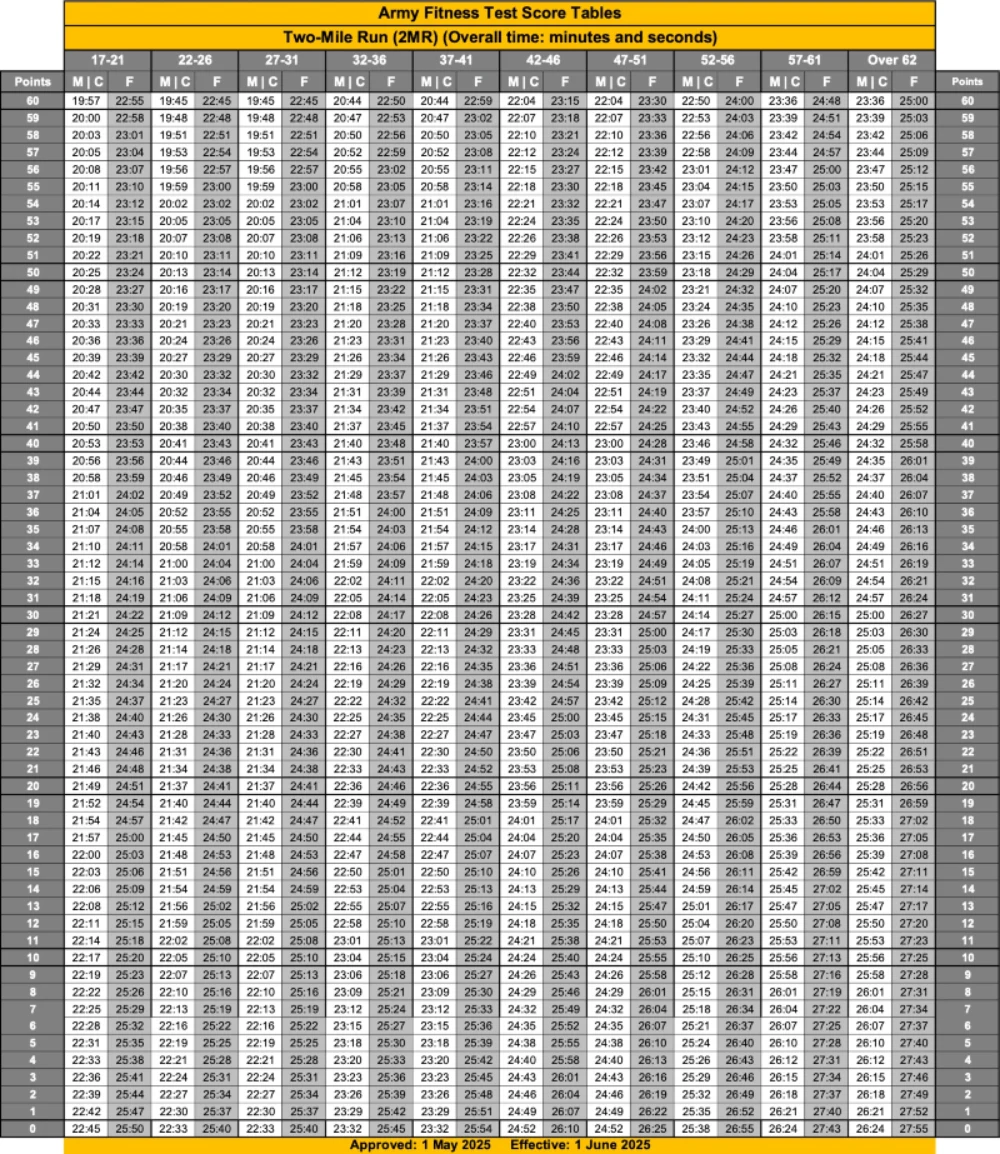
The classic endurance event remains in the lineup with some timing changes.
Requirements:
- Run two miles continuously on an approved surface (track, road, etc.).
- No terrain running (grass, gravel) is allowed.
- You may walk or slow down, but stopping impacts time and potentially your score.
What’s New:
- Combat soldiers, especially women, now face tighter time standards, with some up to three minutes faster than the previous ACFT.
- Minimums differ slightly based on MOS, age, and gender for non-combat roles.
This test remains a crucial measure of cardiovascular endurance and mental pacing under stress.
Promotion Points and Career Impact
Your AFT score directly affects your promotion point calculations. High-performing soldiers earn more points, which increases visibility on promotion boards.
Here are some tips that can help you earn higher scores on the test:
- Personalized Training: Know your weak spots and target them.
- Practice Under Test Conditions: Simulate event standards, timing, and transitions.
- Use Online Calculators: These help estimate your points based on current capabilities. You can use our free AFT calculator to find out all your stats and current fitness level.
- Train with Others: Peer motivation and correction improve consistency.
- Stay Consistent: Periodic testing (mock or official) keeps progress visible and sustainable.
Frequently Asked Questions (FAQ)
What happens if I fail one AFT event but still score above the minimum total?
It doesn’t matter what your total score is; if you fail in any one of the five events (scoring below 60 points), it results in a failed test. Every event must be passed individually. The total score requirement (300 or 350) is a threshold that applies only after you meet minimums across the board.
Can I retake the AFT if I fail, and how soon?
Yes, you’re allowed to retest after failing, but the timing depends on your unit’s policy and operational schedule. Typically, retesting is permitted within 30 to 90 days, so you get a proper time to train again and improve. Though too many failures may lead to counseling, remedial PT, or even reclassification if you’re in a combat role and can’t meet the 350 standard after multiple attempts.
Does AFT scoring affect reenlistment eligibility or bonus qualifications?
In many cases, yes. Units often use AFT performance as part of a broad readiness and personnel assessment. A high AFT score can help qualify you for different retention bonuses, specialty schools, or advanced assignments. Conversely, consistently low or failing scores can negatively impact reenlistment approval, mainly in competitive MOSs.
Is the AFT adjusted for environmental conditions like high altitude or extreme heat?
No official adjustments are made to scoring for environmental factors. However, commanders may reschedule or modify the execution timeline (not standards) if weather conditions aren’t good and risk soldiers’ safety. That said, it’s your responsibility to train under different conditions as test day doesn’t wait for the right weather.
Are there any exemptions or modified standards for soldiers with permanent profiles?
Yes. Soldiers with permanent medical profiles might be authorized alternate aerobic events instead of the 2-mile run (like a stationary bike or swimming). However, approval is command- and profile-specific, and alternate AFT scoring scales apply. The rest of the Army Fitness Test is usually not waived, unless your profile prohibits specific movements.
Do AFT scores influence school slots (e.g., Ranger, Airborne, NCOES)?
Yes. While AFT isn’t the sole factor, a strong score is often part of the selection criteria for competitive schools like Ranger, Airborne, Air Assault, and NCOES courses. High performance signals physical readiness and professionalism — traits closely evaluated for leadership-track courses and special assignments.

